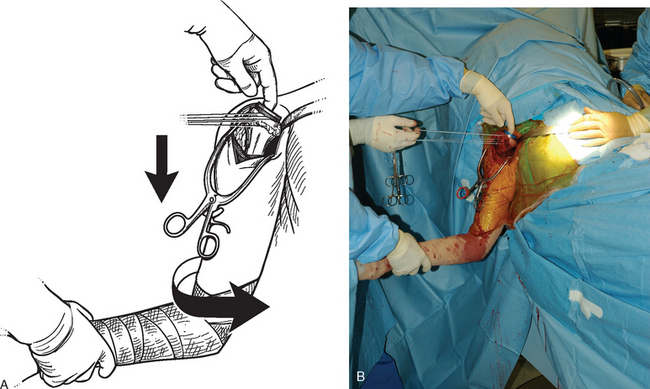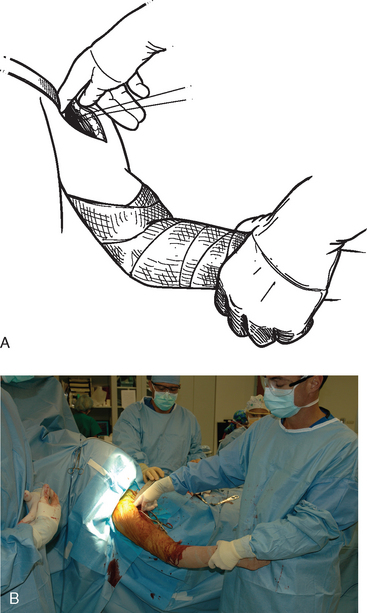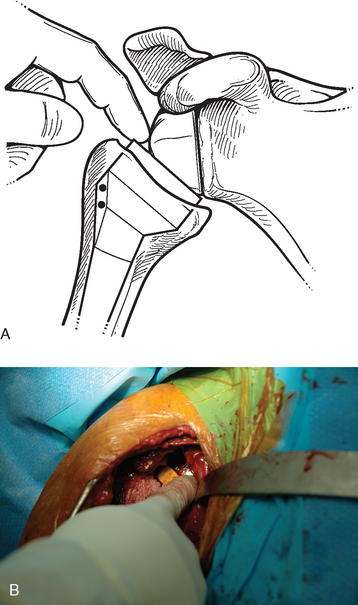CHAPTER 30 Reduction and Deltoid Tensioning
Perhaps the most important and yet most subjective portion of the surgical technique for implantation of a reverse prosthesis is proper tensioning of the deltoid. The most frequent complication of a reverse prosthesis that requires further treatment is dislocation of the glenohumeral prosthesis. Proper tensioning of the deltoid can help minimize this complication.
HUMERAL COMPONENT TRIALING
After the humeral component has been inserted as described in Chapter 28, humeral component trialing begins. In patients with proximal humeral bone loss, component trialing should not begin before complete curing of the polymethylmethacrylate. In patients with good proximal support of the humeral component, prosthetic trialing commences immediately after insertion of the humeral component within the bone cement.
Trial reduction starts with insertion of the 6-mm polyethylene trial insert into the metaphyseal portion of the final implant (Fig. 30-1). The glenohumeral joint is reduced (this should be somewhat difficult) by applying longitudinal traction to the arm and placing a finger in the “cup” of the trial insert to guide the humeral component toward the glenosphere (Fig. 30-2). Gradually flexing the arm as traction is applied assists in reduction. Deltoid tension is evaluated by stabilizing the scapula and applying longitudinal traction to the arm in neutral position (Fig. 30-3). We have anesthesia personnel maintain neuromuscular paralysis during this portion of the procedure, and the anterior glenoid rim retractor holding the conjoined tendon medially is relaxed. A finger is placed at the interface of the humeral and glenoid components (Fig. 30-4). Minimal (<2 mm) “pistoning” should occur with this maneuver. If tension is inadequate, the 9-mm insert is placed and reduction and testing are repeated. A 12-mm insert is available, as is a 9-mm metallic metaphyseal augment, to further increase tension if necessary (Fig. 30-5). Once appropriate tension has been obtained, it may be difficult to dislocate the implant with the trial polyethylene insert. We routinely use a bone hook on the edge of the trial insert to provide traction on the prosthesis (Fig. 30-6). As traction is applied, the arm is extended to dislocate the prosthesis.
Stay updated, free articles. Join our Telegram channel

Full access? Get Clinical Tree












